To do their job, they dangle from high-rise buildings by just a rope
These technicians risk their lives every time they go to work, and go to great lengths to perform tasks few dare to, in places few can reach. On The Red Dot finds out what drives them.
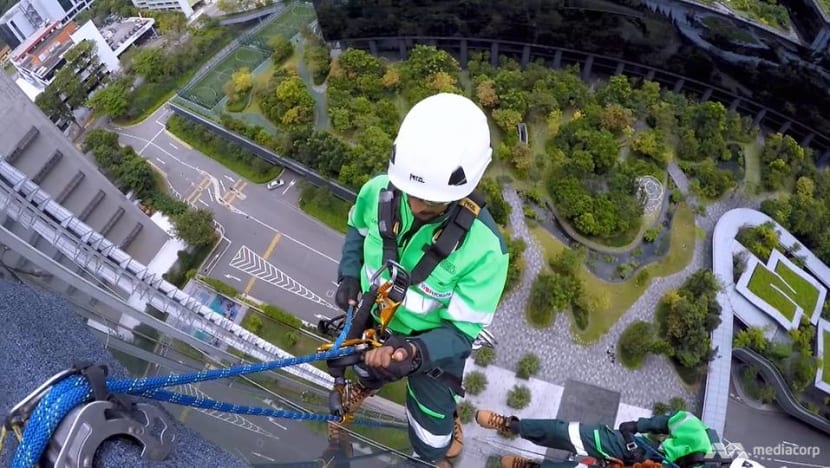
Rope access professionals do a range of jobs, from cleaning building facades to executing rescue missions.
SINGAPORE: He peered over the rooftop of the 15-storey building several times, apprehensive about his first descent, supported by just a rope.
Minutes later, this rope access trainee managed to climb over the edge, but held onto the ledge for a few seconds. He then changed his mind and scrambled to safety.
Asked why he came back up, the slightly spooked Mr Guna Prasanth answered: “I’m scared.”
Mr Daniel Wu, one of his supervisors and a rope access technician with 14 years’ experience, pointed out: “They try to go over the edge, look down and they get nervous. This is a very common mistake (for newcomers).”

Eventually, Mr Guna was too afraid to complete his task.
The fears and challenges faced by rope access professionals risking their lives to reach dizzying heights were highlighted by the programme On The Red Dot, in a new series on the lives of individuals whose jobs are fraught with danger. (Watch the episode here.)
It offers a glimpse of their workplaces, from deep waters to claustrophobic lift shafts to the top of buildings, to learn what drives these professionals and how they come through harrowing incidents unscathed.
LEARNING THE ROPES
In the world of rope access, its technicians use rope-work developed from common techniques used in rock climbing and caving to do various tasks, including maintenance work, inspections and cleaning. There are about 2,700 certified technicians in Singapore.
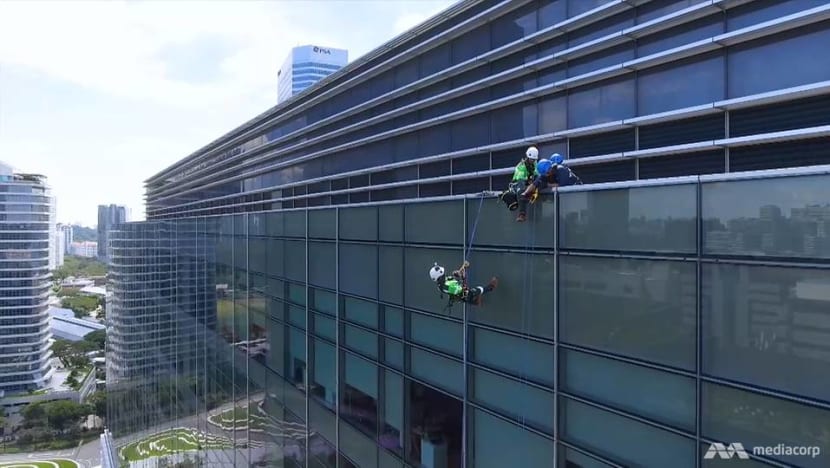
Mr Guna, who is from India, had completed his rope access course a week before getting his first start with some cleaning work he had to do on the facade of that 15-storey building.
“I see other (technicians) work very well. They’re happy at work. So I think I could also try,” he said.
But one of his trainers, Mr Richard Seah, who has 11 years of experience, had some doubts before the newbie’s failed attempts.
“He looked a bit too overconfident because of the training he had been doing at a low height,” he said. “His experience in Singapore isn’t long. He may not be able to catch up yet.”

After a refresher session, however, Mr Guna managed to descend the building to do his job on another day, much to Mr Seah’s delight.
“There’s a very big jump in improvement, so of course credit to him. But when there are other jobs, he may need to (do) more to keep up,” said the trainer.
Their work has to be done quickly, although Mr Seah, who is his company’s assistant training manager as well as safety officer, does not take safety for granted.
“Every morning, before I go to work, I tell myself that I’d like to have zero accidents,” he said solemnly. “People think that we’re construction workers or that we’re having fun on the ropes. But everybody agrees that it’s dangerous.”

The biggest causes of workplace accidents, he added, are miscommunication and language barriers.
IT TEACHES DISCIPLINE
For ex-convict Mr Wu, dangling in mid-air from high-rise structures without the use of an aerial work platform, a crane or even scaffolding is all in a day’s work.
“It’s a serious business, so serious that any mistake you make may cause fatalities … In this line, you need to discipline yourself, look after yourself and make sure that everything’s in place” he said.
“Rope access has been very good for me. It has taught me discipline.”
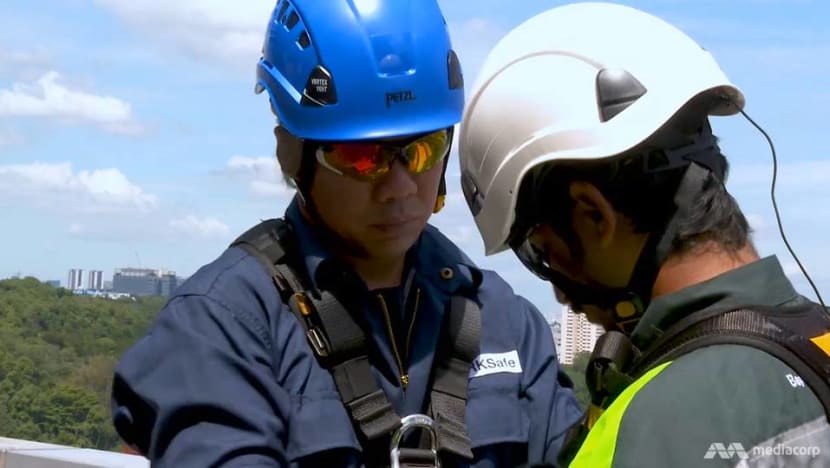
The 41-year-old had been at a loss for what to do after prison and had taken to drinking until he met a group of rope access technicians, some of whom were his ex-army mates.
“They were showing me pictures of their work … and then some of them were saying, ‘Eh, come join,’” he recalled. “I was like, okay, maybe I’ll give it a try.”
His first job was very tiring. Cramped up in a vessel’s tank, with a head torch as his only light source, he had to lug around more than 40 kilogrammes of equipment and help a welder to repair the vessel.
But he liked the challenge and is still doing it, some 14 years later. The “high-flying” job, he said, has taken him to more than half of the world, from South Korea to the Middle East to France.
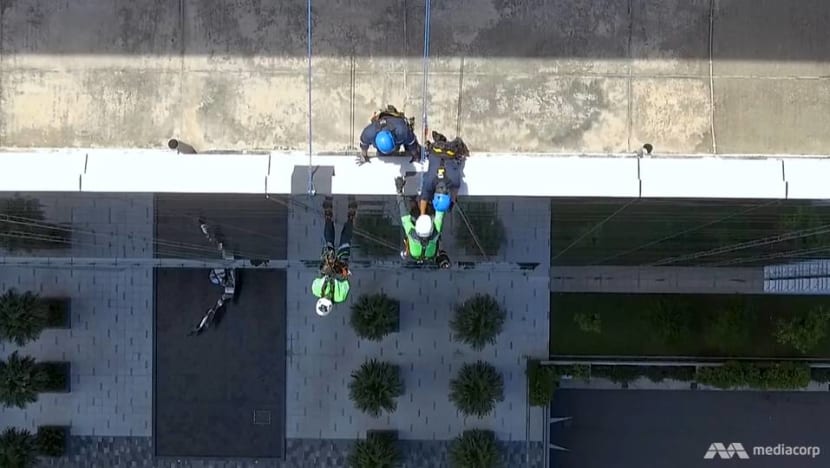
He used to work offshore on oil rigs and was often away from his family, sometimes for up to three months. “Sometimes it’s hard,” admitted Mr Wu, who is married with three sons.
“I do enjoy the work, but being away for too long isn’t ideal.”
These days, he works on construction sites and commercial buildings in Singapore. As a trainer, he also spends a lot of time guiding others. “You need to look after the crew,” he said.
“Rope access may be dangerous, but I know it’s a very safe system when you follow every procedure.”
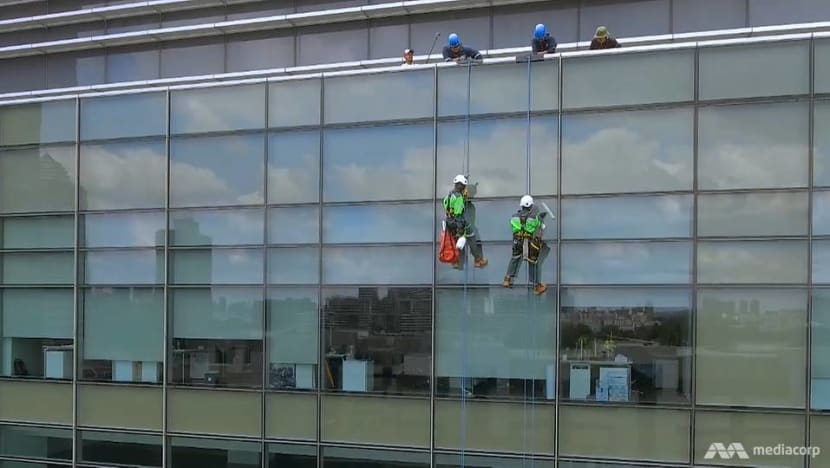
SATISFYING JOB, WORRIED FAMILIES
Apart from maintenance work, rope access technicians are sometimes called upon to take part in rescue missions, for example when the Singapore Flyer broke down in 2008, leaving 173 people stranded for about six hours.
Mr Sky Lee, whose rappelling services were needed, brought them rations while they waited to be rescued. His team had practised rescue sessions there before, so they knew what equipment to bring “and what not to do”.
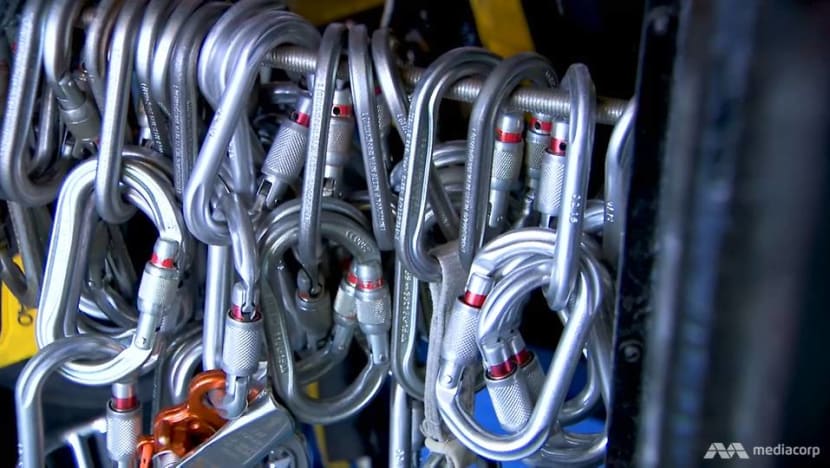
His colleague Tirmidzie Mohamad Kamal has witnessed rope access technicians rescuing a heatstroke victim from the roof of a building.
“I got to know that it’s not just work. You get trained to perform a rescue. That’s when I decided to commit myself and get certified,” he said.
“It’s satisfying to do all this work, especially when you know that you’re preventing someone from getting injured.”
His wife Normie Ibrahim, however, worries while he is at work. “When he got this job, my reaction was like, ‘Wah, it’s so dangerous!’” she recalled.
“And I used to nag (him): ‘What’s the time already? What time are you going to come home?’ When I message and he (doesn’t) reply, it worries me a lot. But he’s really passionate about this.”

For Mr Seah, his family were not aware of the risks in his job until he showed them pictures of himself suspended by ropes from the roof of a building.
His mother, who thinks he can be impulsive at times, told him: "Whenever you go to work, I start to worry. My heart would beat so fast, and I can’t sleep properly.”
Watch this episode here. On The Red Dot airs on Mediacorp Channel 5 every Friday at 9.30pm.
















